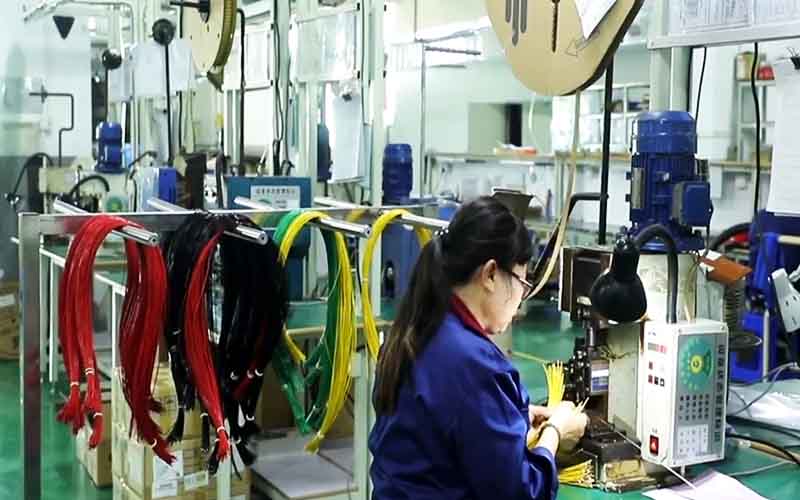Common Anomalies in Wire Harness Production
In the wire harness manufacturing industry, several common anomalies can occur that may affect product quality. Understanding these issues and implementing effective control measures is crucial to maintaining the integrity of wire harness products. Here are some of the frequent anomalies encountered in wire harness production and how to manage them:
1. Wire Damage During Stripping:
Damage to wires during the stripping process often results from improper machine adjustment or handling during the wire harness production. A detailed analysis of the product’s movement during processing is necessary to identify the cause.
2. Terminal Processing Errors:
Issues such as necking, splaying of copper wires, wire breakage, and terminal deformation typically arise from operator errors during the crimping of wire harness terminals. These issues may go undetected if not caught by the subsequent inspection station.
3. Terminal Disengagement:
This can occur in two scenarios: (a) improper pull-back checks when inserting terminals into housings, and (b) single-wire tension due to incorrect cutting or assembly sequence, leading to damage to the housing’s locking position. Reevaluation of the cutting dimensions and assembly sequence is required for the wire harness.
4. Dimensional Non-conformance:
(a) Setting unreasonable cutting dimensions close to the upper or lower tolerance limits of the wire harness product. (b) Misalignment of core wires during bundling, leading to excessive entanglement and affecting final dimensions. (c) Lack of initial inspection by the cutting personnel, resulting in dimensions exceeding tolerance limits. In any case, wire harness dimensions should be re-verified to identify and address the issue.
5. Electrical Defects Post-Molding:
These are mostly due to welding issues or incorrect molding pressure settings, leading to poor welds or excessive pressure during injection molding of wire harness components.
6. Molding Issues:
Problems such as flash, sink marks, short shots, and wire damage can arise from several factors: (a) incorrect machine parameter settings, (b) variations in wire OD exceeding design tolerances, (c) material damage during the molding of metal parts, often due to supplier tolerance issues, and (d) poor mold design or manufacturing affecting the wire harness.
7. Difficulty with Heat Shrink Tubing:
Challenges in threading heat shrink tubing over wires or fitting wires into housings after termination are generally due to unstable wire OD, particularly at the wire ends, which is a supplier-related issue for the wire harness.
8. Functional Test Failures:
Common in molded wire harness products, these can also result from misalignment or short circuits during the insertion and welding processes, or non-compliance with regulations. Specific functional failures should be analyzed in detail.
9. Infrequent Anomalies:
Issues like missing materials, incorrect tubing, and errors in tubing & label printing are primarily due to human error or failure to follow procedures in wire harness production.
Most problems encountered in wire harness production can be attributed to three main areas:
1. Design Inconsistencies:
Inaccurate data provided during sample creation or errors in data sources during drawing for the wire harness.
2. Improper Operator Actions:
Lack of proper training before production or employees working based on their own understanding or incorrect operations in wire harness assembly.
3. Non-adherence to Procedures:
The initial inspection process is critical for wire harness quality control. Diligent and strict adherence can prevent mass production errors.
By addressing these areas, manufacturers can significantly reduce the occurrence of product anomalies and ensure consistent quality in wire harness production. Contact FPIC for more information by info@sz-fpi.com.




